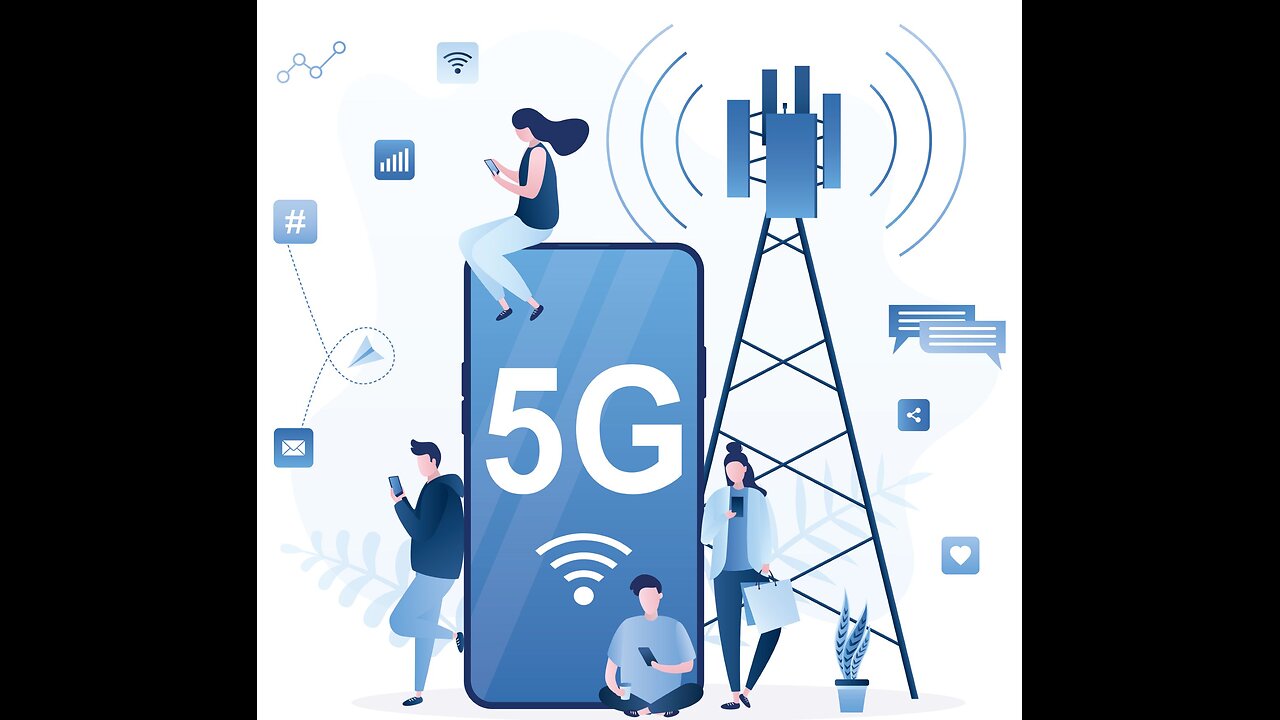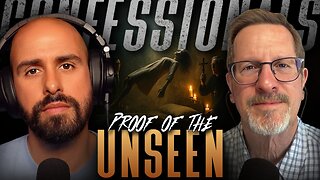Premium Only Content

We Tested 5G vs 4G Here's What's Best For Your Safety
Hello, I'm Minister Charles Nolen, examining the relationship between radiation exposure and EMF readings using specialized equipment. Our demonstration with an emf meter shows significant radiation effects in everyday environments, while a geiger counter provides additional verification of these measurements. Join me as we explore how ionization levels affect our daily lives. Email Charles.Nolen1@gmail.com for more insights and discussions.
Concerns about 5G radiation often center on the radiofrequency electromagnetic fields (RF-EMF) that 5G networks utilize. Here's a breakdown of key points:
Non-ionizing radiation:
5G, like previous cellular technologies, uses non-ionizing RF-EMF. This type of radiation has lower energy than ionizing radiation (like X-rays), which is known to cause damage to DNA.
Therefore, 5G RF-EMF does not have enough energy to directly break chemical bonds in molecules.
Frequency and exposure:
5G utilizes higher frequencies than previous generations of cellular technology. This has led to concerns about increased exposure.
However, regulatory bodies like the Federal Communications Commission (FCC) and the World Health Organization (WHO) have established guidelines to limit RF-EMF exposure.
The levels of RF-EMF emitted by 5G networks are generally considered to be well below these safety limits.
Scientific research:
Ongoing research continues to investigate the potential health effects of RF-EMF exposure.
Many studies have been conducted on the effects of RF-EMF, and while some studies have shown biological effects, consistent evidence of adverse health effects from typical exposure levels is lacking.
It is important to understand that there are many studies being conducted, and that the scientific community is still working to fully understand all potential risks.
Key concerns:
Concerns exist regarding the potential for long-term exposure effects, especially with the increased deployment of 5G infrastructure.
There are also concerns regarding the higher frequency millimeter waves that 5G utilizes, and how those waves interact with the human body.
Regulatory Guidelines:
Organizations such as the International Commission on Non-Ionizing Radiation Protection (ICNIRP) and the World Health Organization (WHO) provide guidelines to limit exposure to RF-EMF.
In summary, while concerns about 5G radiation exist, current scientific consensus and regulatory guidelines indicate that exposure levels are generally safe.
However, ongoing research is crucial for continued monitoring and assessment.
Email Charles Nolen at:
Charles.Nolen1@gmail.com
official websites:
RollinwithNolen.com
and
CharlesNolen.com
Please subscribe and click on notifications
Thank you!
Charles Nolen
-
 LIVE
LIVE
GritsGG
58 minutes agoWin Streaking! Most Wins 3485+ 🧠
15 watching -
 1:02:09
1:02:09
The Confessionals
21 hours agoThe Supernatural Proof You Can’t Ignore (When Angels and Demons Showed Up) | Lee Strobel
30.5K22 -
 15:24
15:24
Degenerate Jay
21 hours ago $0.76 earned5 Best Moments In Batman: Arkham Asylum
14K -
 12:24
12:24
The Shannon Joy Show
15 hours ago🔥From Flock Cameras to Palantir: America’s Expanding Digital Cage🔥
11.8K2 -
 2:03:45
2:03:45
BEK TV
1 day agoTrent Loos in the Morning - 8/27/2025
12.2K -
 LIVE
LIVE
The Bubba Army
23 hours agoTaylor Swift & Travis Kelce ENGAGED! - Bubba the Love Sponge® Show | 8/27/25
1,353 watching -
 40:14
40:14
Uncommon Sense In Current Times
18 hours ago $2.57 earnedThe Dating Crisis in America | J.P. De Gance on the Church’s Role in Restoring Family & Faith
47.1K6 -
 12:35
12:35
Red Pill MMA
20 hours agoNow We Know The Truth.. Hero Who Stopped Raja Jackson Speaks Out
18.1K8 -
 8:03
8:03
MattMorseTV
19 hours ago $9.35 earnedThings in the UK just got INSANE...
98.2K139 -
 3:02:10
3:02:10
daniellesmithab
13 hours agoAlberta Next: Fort McMurray Town Hall
24.4K1